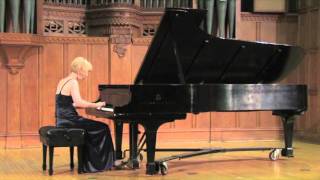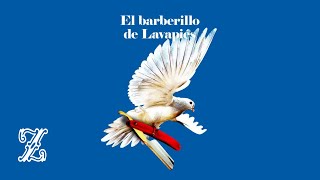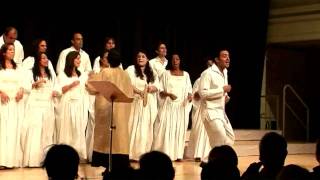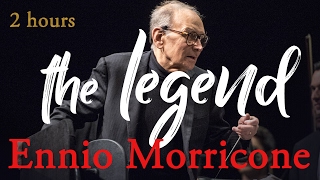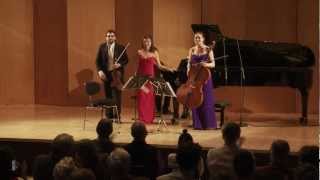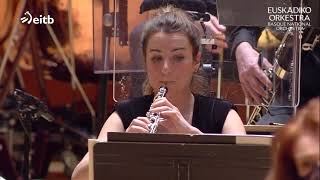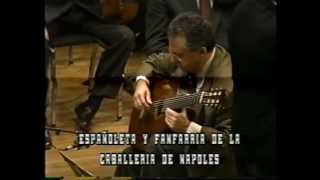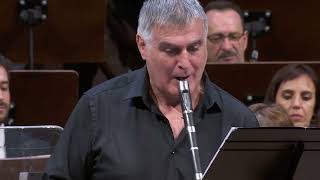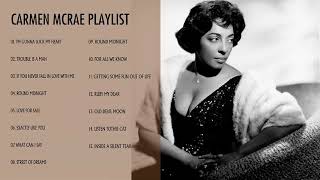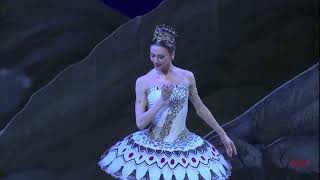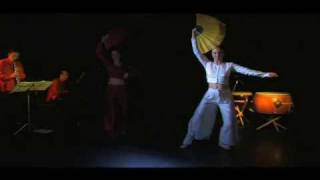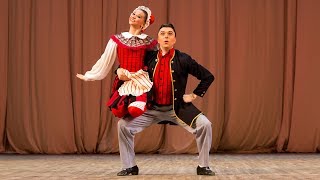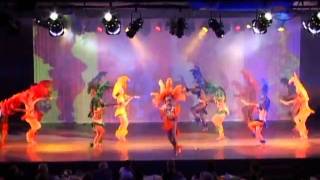Recommended music videos for initiation to classical music
Ludwig van Beethoven (1770-1827) together with Bach and Mozart is part of the trio of giants of Western music. Born in Bonn , his father, of Flemish origin, tried to showcase him as a second Mozart , although it was a notable failure. Despite this, from the age of nine the organist Christian Gottlob Neefe captivated him with the study of Bach , whom he would always keep in mind. In 1787 he moved to Vienna with the intention of taking Mozart classes, but the death of his mother returned him to Bonn a few days later. And so after five years, he returned to Vienna where he was able to study with Haydn and Salieri . However, his profession as an excellent pianist could not be carried out due to deafness that attacked him the following year until he was completely incapable of this faculty.
Sonata No. 8 in C minor, subtitled “Pathétique” by the editor, was composed by Beethoven at the age of twenty-seven and is one of the sonatas classified as from the classical period; It consists of three movements, of which today we present the third, Rondó, Allegro offered by the pianist Elena Doubovitskaya .
El Barberillo de Lavapiés is a zarzuela in three acts with a libretto by Luis Mariano de Larra and music by maestro Barbieri . It premiered with great success at the Teatro de la Zarzuela on December 19, 1874 and tells us the entertaining adventures of Lamparilla , a barber from the Madrid neighborhood of Lavapiés , and the seamstress Paloma who find themselves immersed in a world of political intrigue within the environment. traditional Madrid of Carlos III ; Today we can see it under the direction of José Miguel Pérez Sierra .
The author of the zarzuela, Francisco Asenjo Barbieri (1823-1894) was a Spanish composer born in Madrid who, after entering the Madrid Conservatory , studied piano, clarinet, singing and composition, managing to write, throughout his career, more of 70 zarzuelas. Founder of the magazine La España Musical , he decisively defended the ideas of musical theater in Spanish, which ultimately led to the resurgence of zarzuela. He was an academic of Fine Arts and member of the Royal Spanish Academy .
Bartolomé Maximiliano Moré Gutiérrez (1919 - 1963), better known artistically as Benny Moré , nicknamed "the Bárbaro del Ritmo" and "el Sonero Mayor de Cuba" was a Cuban singer-songwriter. In addition to an innate musical sense, he was gifted with a fluid tenor voice, which he colored and phrased with great expressiveness. Moré was a master of all genres of Cuban music, but he stood out particularly in the son montuno, the mambo and the bolero .
Entrevoces Chamber Choir . It is a mixed choir, which has stood out for its excellent interpretation of music from all periods and styles, from Spanish, English and Italian Renaissance polyphony, to contemporary music, black spirituals, Latin American folklore and Cuban music. in general. Founded in 1981, by Professor Digna Guerra Ramírez , it has offered concerts in the most prestigious venues in the country and performed for the Diplomatic Corps accredited in Cuba , as well as for radio and television. Currently, it enjoys well-deserved national and international prestige for the successes it has achieved throughout its career.
Ennio Morricone (1928-2020) was an Italian conductor and composer of more than 500 film and television soundtracks and other symphonic and choral compositions. With a musician father, as a child he began studying the trumpet and at the age of nine he entered the National Academy of Santa Cecilia . At the age of 18 he began writing for radio programs and, little by little, for film films. The film director Sergio Leone , a childhood friend, asked him to collaborate on his films and thus they created a different model of western, the Spagetti Western . His contracts were expanded with other directors until he became one of the most appreciated composers of soundtracks. Throughout his career he received important and countless awards endorsing his brilliant work.
2 Hours of Music by Ennio Morricone
1 The Sicilian Clan (From "The Sicilian Clan") 00:00 - 03:56
2 Cinema paradiso (From "Cinema paradiso") 03:58 - 06:23
3 La calipha (From "The Lady Caliph") 06:25 - 09:01
4 Romanzo (From "1900") 09:03 - 13:08
5 Estasi (From "The Mercenary") 13:10 - 15:12
6 Love Theme for Nata (From "Cinema paradiso") 15:14 - 19:22
7 L'arena (From "The Mercenary") 19:24 - 24:06
8 Romanza quartiere (From "Quartiere") 24:08 - 27:46
9 A friend (From "Revolver") 27:48 - 30:23
10 Ninna nanna per adulteri (From "Cuore di mamma") 30:25 - 33:27
11 The Trio (From "The Good, the Bad and the Ugly") 33:29 - 40:41
12 Il pinguino (From "Let's kill, comrades") 40:43 - 43:40
13 Come Maddalena (From "Maddalena") 43:42 - 52:52
14 The Strong (From "The Good, the Bad and the Ugly") 52:54 - 55:16
15 My fault? (From "My Name is Nobody") 55:18 - 01:00:06
16 The messicana (From "Let's kill, comrades") 01:00:09 - 01:02:46
17 Face to Face - Interlude (From "Face to Face") 01:02:48 - 01:05:28
18 Minacciamente lontano (From "The Hellbenders") 01:05:30 - 01:08:14
19 Il segreto (From "Il segreto") 01:08:15 - 01:10:56
20 The Sundown (From "The Good, the Bad and the Ugly") 01:10:58 - 01:12:10
21 Childhood and Manhood (From "Cinema paradiso") 01:12:12 - 01:14:25
22 Tema di Ada (From "Novecento - 1900") 01:14:27 - 01:19:16
23 Barbablu'... Romantico (From "Barbablu'") 01:19:18 - 01:22:48
24 Dinner (From "La califfa") 01:22:50 - 01:25:31
25 Abolisson (From "Queimada") 01:25:33 - 01:30:38
26 Notte di giorno (From “Una luzertola con la pelle di donna”) 01:30:40 - 01:35:25
27 Mosca addio (From "Mosca addio") 01:35:27 - 01:40:17
28 In ogni casa una storia (From "Quartiere") 01:40:19 - 01:43:55
29 Amore come dolore (From "Le foto proibite di una Signora per bene") 01:43:57 - 01:50:05
30 Irene (From "The Untouchables") 01:50:07 - 01:53:43
31 Il colore dei suoi occhi (From "La disubbidienza") 01:53:45 - 01:58:14
32 Via Mala: Silvie momento d'amore (From "Via Mala") 01:58:16 - 02:01:44
33 Love Scene 1 (From "Increase and Multiply") 02:01:46 - 02:07:38
34 A photograph (From "L'alibi") 02:07:40 - 02:10:12
35 Canzone without parole (From "Farewell Moscow) 02:10:15 - 02:13:06
36 La Banchiera (From "The Lady Banker") 02:13:07 - 02:16:04
37 Falsa tranquillità (From "La monaca di Monza") 02:16:06 - 02:19:12
38 I read a voice (From "The Law of the Desert) 02:09:14
Recommended classical music videos
Franz Joseph Haydn (1732-1809), Austrian composer whose brother Michael Haydn was also a notable composer, was one of the main pillars on which classicism (1750-1810) was based. At six years of age he began his studies of harpsichord and violin. At the age of eight he was admitted as a choralist at St. Stephen's Cathedral in Vienna where he continued his musical studies. After changing his voice, he had to survive by working multiple jobs, while studying composition analyzing the works of Carl Philipp Emanuel Bach . He maintained a close friendship with Mozart and was Beethoven 's teacher. He laid the main foundations of the sonata form and the formal structure of the string quartet and the symphony. He died at the age of 77 in Vienna .
The Piano Trio in C Major , Hob XV: 27, no. 43 by Joseph Haydn is structured in three movements: The opening movement (ALLEGRO 0´00´´) in sonata form , begins with a fanfare and maintains a classical elegance, with many pauses and a delicate piano figuration and a second theme that is derives from the first. The development section intensifies the mood with an almost baroque feel and moves into a faux recapitulation in LAb and some energetic counterpoint, before the lyrical grace of the opening returns to the recapitulation proper. The second movement (ANDANTE 8´43´´) in simple ABA form, begins with a soft Sicilian melody, which reasserts itself before moving into a more dramatic A minor section, peppered with strong accents and with a more important role for the cello than usual in Haydn 's trios. The final movement (FINALE. PRESTO 13´42´´) is one of several movements by Haydn that use a hybrid sonata and rondo form, combining the harmonic expectations and development of the sonata with a recurring refrain. It has a striking main theme that was described by Charles Rosen as the funniest of all Haydn 's movements. The fast pace and momentum of the opening is maintained through rapid conversational exchanges between piano and violin, indicating that the era of the trio as an accompanied piano sonata is coming to an end.
Today it is offered to us by the Gaspard Trio made up of Jonian Ilia Kadesha violin, Vashti Mimosa Hunter cello and Hyo-Sun Lim piano.
Antonín Dvořák (1841-1904), born in Nelahozeves (then Bohemia and now Czechia ), is considered one of the great masters of the second half of the 19th century and the main representative of Czech nationalism. In 1847 he entered the primary school of his town, where he received his first musical lessons. During the 1860s he played viola in the Bohemian Provisional Theater Orchestra , conducted from 1866 by Bedřich Smetana . In 1873 he was awarded all kinds of important international awards for his collection of Slavic Dances . Throughout his life he wrote abundant vocal, chamber, symphonic and operatic music. His New World Symphony is a well-known work and its themes have been widely used in popular music.
The Symphony No. 5 in F major , Op. 76 by Antonín Dvořák was written in 1875 and the first thing that catches your attention is the high number of opus of this composition. The explanation lies in the fact that Dvořák took a while to decide to publish his symphonies. When he did, he first published the sixth, but with No. 1; then he published the seventh with number 2; Finally, seeing the success that the previous works had obtained, he gave the fifth symphony to the press with No. 3 and as Op. 76, instead of assigning it the number that really corresponded to it, which was 24. It is usually admit that this symphony marks the beginning of Dvořák 's musical maturity and preludes an intense and productive period of work. He composed it in just over a month, and when he had to revise it years later for its publication in 1888, he only had to make slight adjustments to it.
Structured in four movements: I ALLEGRO MA NON TROPPO .-. II (10´12´´) WALKING WITH MOTORCYCLE .-. III (18´50´´) SCHERZO: ALLEGRO SCHERZANDO .-. IV (25´50´´) FINALE: ALLEGRO MOLTO, Dvorak dedicated it to the famous conductor Hans von Bülow who gave extreme praise to the work and its author. The premiere took place in Prague in 1879 and today it is reproduced for us by maestro Ruth Reinhardt conducting the Euskadi Symphony Orchestra ; conductor, who is quickly establishing herself as one of the most dynamic and nuanced young conductors working today, building a reputation for her musical intelligence, programmatic imagination and elegant performances.
Joaquín Rodrigo (1901-1999) was a Spanish composer born in Sagunto (Valencia). At seven years old he became blind; At nine, he began his studies in music theory, violin and piano; At 16, harmony and composition and at 22, he began to compose his first works. At the age of 26, he moved to Paris , where for five years he studied with Paul Dukas . In 1940 he premiered the Aranjuez Concerto in Barcelona , from which he would become world famous. He was a prolific composer who wrote works for solo instruments, for piano with another instrument, for string orchestra, wind orchestra and symphony orchestra, concertos for different instruments, songs, symphonic-choral works and stage music, always keeping a common denominator: the clarity, delicacy and distinction of his music.
Fantasy for a Gentleman is a concerto for guitar and orchestra by Joaquín Rodrigo . It is their second most popular concert, after the Aranjuez Concert . Its four movements are based on six short dances for solo guitar by the 17th-century Spanish composer Gaspar Sanz . Most of the movements retain the original names of Sanz , although Rodrigo expanded the themes to produce a more powerful work, although he was always clear about maintaining the essence of these dances "A whole past of dances, in which old time and new ones end up becoming connected, revived in these titles. I decided that the harmonic language and the sound climate would not hinder the spirit of those titles."
The Concerto is structured in the following four movements: I (0´26´´) VILLAIN AND RICERCARE (Adagietto).-. II (5´10´´) SPANISH (Adagio) AND (9´53´´) FANFARE OF THE NAPLES CAVALRY (Allegretto). -. III (14'52'') (DANCE OF THE AXES (Allegro con brio). IV (17'03'') CANARIO (Allegro ma non troppo). Today's performance is by Pepe Romero accompanied by the Philharmonic Orchestra from UNAM under the direction of Manuel Goldof.
Felix Ibarrondo (1943), born in Oñati (Gipuzkoa), began his studies with his father, music band director, to continue them at the conservatories of San Sebastián and Bilbao. In 1969 he moved to Paris where he completed his training and where he continues to normally reside today. His work, which covers all types of vocal and instrumental formations, has received important awards such as the Gold Medal of Fine Arts , in addition to the 11 awards won in as many national and international competitions. As a common denominator of his compositions we can see the tension accumulated by the contrasts posed and his desire to experiment with new modes of expression.
The Txistu (tuned in F) belongs to the European family commonly called the “Three-Hole Flute”. It is played with only one hand (normally the left), so that the other is free to play the drum that hangs from the arm used to play the txistu. The whistle or txistu haundi , a deeper instrument, tuned in Bb , and the txirula, a higher-pitched instrument (tuned in C), belong to the same family, which is usually accompanied by the ttun ttun (string drum). The txistu is used in pilgrimages, parades, tributes, institutional events and in different types of concerts both as a solo instrument accompanied by an orchestra, and as part of a txistus band , which performs works written for three voices (txistu 1st, txistu 2nd). and whistle) with accompaniment of the tambourine and the clear box or snare drum.
Recommended music videos for all tastes
Carmen McRae (1922-1994) was an American jazz singer, composer, pianist and actress. Known by the nickname Singer of Singers , she was a contemporary of Ella Fitzgerald and Sarah Vaughan , and considered the virtual successor of Billie Holiday . She was one of the most important jazz singers and songwriters of the 20th century , across 60 recorded albums and a career that took her to Europe, South America and Japan . McRae, although inspired by Billie Holliday , created her own recognizable voice, with her ironic interpretations of song lyrics being what made her unforgettable. A heavy smoker, she had to retire in 1991 due to pulmonary emphysema and died shortly after of a stroke. She was nominated for a Grammy seven times.
A-ha is a Norwegian rock band founded in Oslo in 1982. Since their first album, success has accompanied them incessantly, until they are considered one of the most successful bands of all time, as attested to by their more than 70 million of albums sold and its six Grammy Awards . His peak occurred in the 80s, especially with his song Take on Me. In 1991 he achieved a Guinness record for the largest audience achieved at a paying concert, with 198,000 spectators at the Maracanã Stadium in Rio de Janeiro .
Toni Braxton (1967) is an American singer, writer, pianist, actress and philanthropist; She has been awarded seven American Music Awards , five Billboard Music Awards and seven Grammy Awards throughout her career. In 2017 she received the legend award at the Soul Train Music Awards , in addition to being the first woman to receive said award. Braxton began her career as a solo artist in 1993, releasing her self-titled debut album that reached number one on the Billboard 200 list of best-selling albums in the USA . The success continued with his second album Secrets which contains the song Un-Break My Heart , a ballad that became a worldwide hit. Currently she is one of the greatest exponents of R&B with a devastating rhythmic force and nostalgia for jazz.
Engelbert Humperdinck , stage name of Arnold George Dorsey (1936), is a British crooner singer and actor. He was born in India when that country still belonged to the British Empire and moved to England at the age of 10. His father was an engineer in the British army and his mother, an opera singer. Due to his perfectly modulated voice, he is considered one of the world's great balladeers and one of the best of all time. His singles " Release Me" and "The Last Waltz " topped the UK music charts in 1967, selling over a million copies each. In the USA , he also had chart hits with " After the Lovin' » (1976) and « This Moment in Time » (1979). He has sold more than 140 million records worldwide.
Recommended peculiar videos
Cesare Pugni (1802-1870) was an Italian musician and composer, specialized in ballet music. Pugni is known for the ballets he composed for Her Majesty's Theater in London (1843–1850) and for the Imperial Theaters in Saint Petersburg (1850–1870). Most of his ballet music was composed for the works of ballet master Jules Perrot . In 1850 Perrot left London for Russia , having accepted the position of first ballet maître of the Imperial Theaters of Saint Petersburg . Cesare Pugni followed Perrot to Russia , and remained in the imperial capital as the official composer of ballet music of the Imperial Theater until his death in 1870. In his lifetime he composed nearly 100 original scores of ballet music and countless incidental dances.
The Pharaoh's Daughter is a ballet choreographed by Marius Petipa with music by Cesare Pugni . The plot tells us how Lord Wilson travels to Egypt where, after smoking opium, the mummies of the pyramid begin to come to life; Suddenly, the pharaoh's daughter, Aspicia places her hand on the heart of the nobleman, who is transported to the past, becoming Ta-Hor , an ancient Egyptian who saves Aspicia from a lion. Ta-Hor and Aspicia fall in love, but she is engaged to the King of Nubia . They flee together, but the king pursues them, catches them and condemns Ta-Hor to death, although after multiple incidents he authorizes the lovers' marriage; but when the celebration party reaches its peak, the opium dream ends and Ta-Hor is transformed back into the English lord.
Éric Satie (1866-1925) was a French composer and pianist, a precursor of minimalism and impressionism and an influential figure in the history of music; He is also considered an important precursor of absurd theater and repetitive music. Reviled by the academy and admired by other composers of his time, he entered the Conservatory at the age of forty. This surprised those who knew him, since until then his training had been irregular and he dedicated himself, among other things, to cabaret music . His best-known work is the Gymnopédies , although the catalog of his work is made up of more than a hundred works of almost all genres. Satie was also a thinker with a "great sense of eloquence", who left a notable body of writings.
Danses Poètiques are a suite made up of small intimate works prepared and choreographed by Beate Gatscha and performed by Gert Anklam on soprano saxophone and sheng (Chinese instrument) and Holger Mantey on piano with Madlen Werner and Beate Gatscha as dancers.
The Polka (or polka) is a popular dance that appeared in Bohemia (now the Czech Republic) around 1830, which began to become popular in Prague from 1835. Its music is written in 2/4 time and fast time; it is danced with lateral steps and quick evolutions; It became very popular in Europe and America .
In this video we offer a variant of the polka , specifically, the Finnish one performed by soloists from the Igor Moiseyev Ballet , which is currently one of the great ballet companies in the world that manages to synthesize the spontaneity of popular dances with the academicism of classical ballet.
Caboclinhos is a folk dance performed during the Pernambuco Carnival (Brazil) by groups dressed as Indians who, with striking headdresses, feather decorations on belts and ankles, necklaces, represent scenes of hunting and combat. Historically, the caboclinhos are related to the cult of Jurema , a tree that produces a tea considered sacred by the caboclinos (mixed white with Indian). The dance is strong and fast, demanding skill and ingenuity on the part of the participants. There are steps in which you dance crouching down, going down and up quickly and at the same time spinning, relying on your toes and heels, requiring a lot of physical resistance.
Jaime Arôxa (1961) is a Brazilian dancer, choreographer and teacher. He is considered one of the greatest dance professionals in Brazil . In 1986, he founded his own school. Parallel to his life as a teacher, he choreographs plays, films, novels and shows. She studied salsa in Cuba and Costa Rica and traveled to several countries in Europe studying competitive dance, including France, Italy and Germany . He has studied tango for more than ten years in Argentina , making Buenos Aires his second city. He also studied jazz and classical ballet. He married the renowned international dancer Kiri Chapman with whom he forms a dance couple traveling around the world.
Recommended music videos for children
Various Wikipedia articles have been used to write these texts.
The texts of Videomusicalis are written in Basque, Spanish and English.





